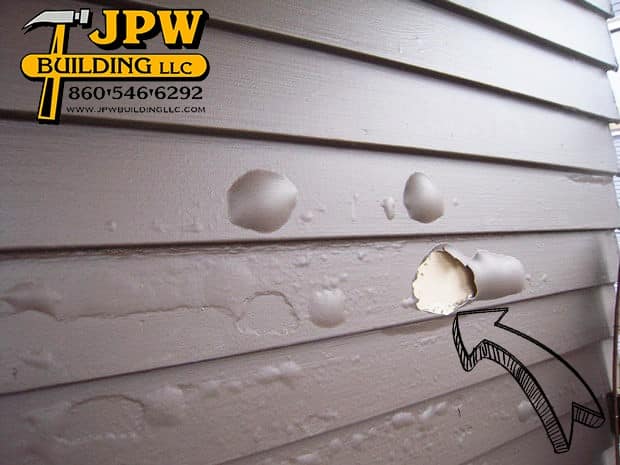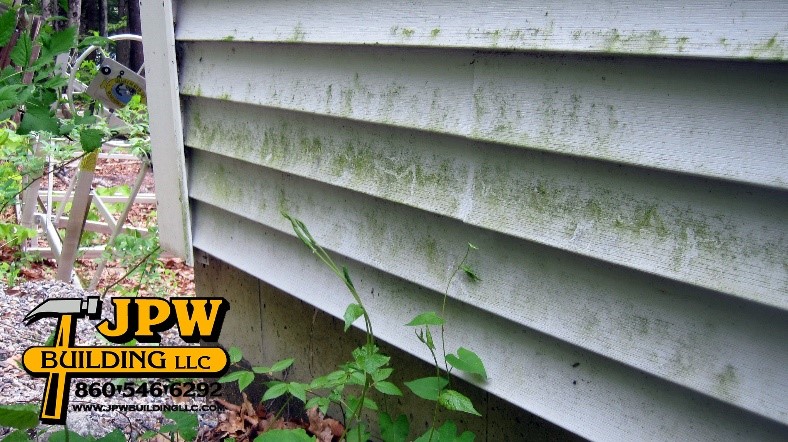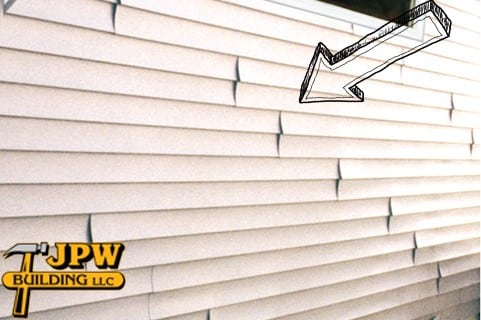If you owned your home when your siding was installed, then you may be aware that it serves more than a decorative purpose. Good siding helps to protect your home from bad weather (of which we get our fair share in CT), moisture, pests, helps to insulate and more.
When your siding fails, your home becomes vulnerable, and loses its curb appeal.
But once its up, way may not pay much attention to our siding, unless it’s literally falling off the side of our home; and by that time it’s already too late.
And if you take a look at your siding, and notice wear and tear, that’s potentially wear that could be done to your home, and your siding is safeguarding against that.
So how do you know that it’s time to replace your siding?
Bubbling / blistering
Bubbling and blistering forming underneath your siding is a major sign that it needs replacing. This suggests that water has got through and become trapped behind your siding. Trapped water can lead to wood rot but also suggests more importantly that your siding isn’t doing it’s job properly – since keeping moisture out is one of its primary objectives.

Mold, Mildew and Fungi
Any kind of growth on your siding – particularly around the seams, suggests that there is moisture present, and this means water could be getting through your siding. This isn’t always a serious cause for concern, you can clean it off with a pressure washer, but it is something to take note of. Again this suggests that your siding is failing to protect your home against moisture build-up.

Warping / rippling
Older siding can eventually warp out of shape or sag with the passing of time. This can again provide an entry point for water, and doesn’t necessarily provide a smart and clean look. A siding company can determine whether there is a cause for replacement or if a repair can be provided.

Damaged seams
Like your windows, siding is often sealed with caulk along the seams and joints. As the temperature rises and falls, so too can your siding expand and contract (depending on its composition); this can shift against the caulk and affect their adhesion along the seams.
Good siding should fit tightly together at the seams. Seam separation suggests that your siding is getting really old, or it was simply installed badly.
Increase in energy bills
Siding is often valued for its ability to keep homes warmer in the winter and cooler in the summer. When the siding begins to fail, your home’s insulation can suffer, and so too can your energy bills. It’s also worth checking your roof and attic insulation as a potential culprit. Speak to a roof inspection company.
Badly faded siding
Has your siding lost its color, and its original appeal? Over time weather can take its toll on your siding, which doesn’t necessarily mean its no good, but it’s worth considering an upgrade before other problems can take hold.

Paint / wallpaper peeling on inside walls
If your paint or wallpaper is beginning to peel off in your home, it could be because the siding is letting moisture into your home. It could be that the siding is getting old, rotting or compromised in some way, the best way to know for sure is with an inspection.
If you notice any of these signs, then it’s time to do something with your siding to avoid it deteriorating further. For siding repair and replacement in Windham County, Connecticut speak to 5 star rated siding specialists Guaranteed Roofing.



